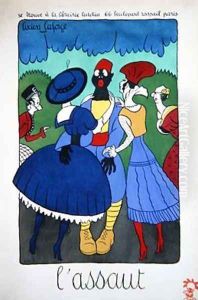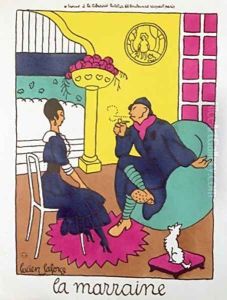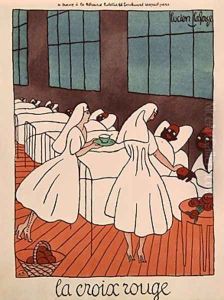Lucien Laforge Paintings
Lucien Laforge was a French artist and illustrator, born in 1889 in Paris, France. He was active during the early 20th century, a period that was characterized by significant artistic innovation and the development of various art movements such as Cubism, Fauvism, and Surrealism. Laforge is perhaps best known for his work as an illustrator, where he contributed to various publications and books, providing images that often reflected the styles and concerns of the era.
In the 1920s and 1930s, Laforge gained recognition for his illustrations in magazines and for literary works. He was associated with avant-garde circles and his illustrations often exhibited the influence of the contemporary artistic trends, including elements of Cubism and Art Deco. Laforge's work as an illustrator was not limited to books and periodicals; he also designed costumes and sets for the theater, which was another important aspect of his artistic output.
His artistic style was versatile and adaptive, allowing him to work on a wide range of projects, from advertising to the illustration of classical texts. Despite this versatility, Laforge's work maintained a distinctive quality, often marked by a sense of elegance and a fine attention to detail. His illustrations often contained a lyrical quality and a unique blend of the modernist sensibility with classical themes.
Throughout his career, Laforge's contributions to the field of illustration were significant, with his works capturing the spirit of his time. His illustrations are considered an important part of the visual culture of the early 20th century in France. Lucien Laforge passed away in 1952, leaving behind a legacy that is appreciated in the context of French art and particularly within the history of illustration.


